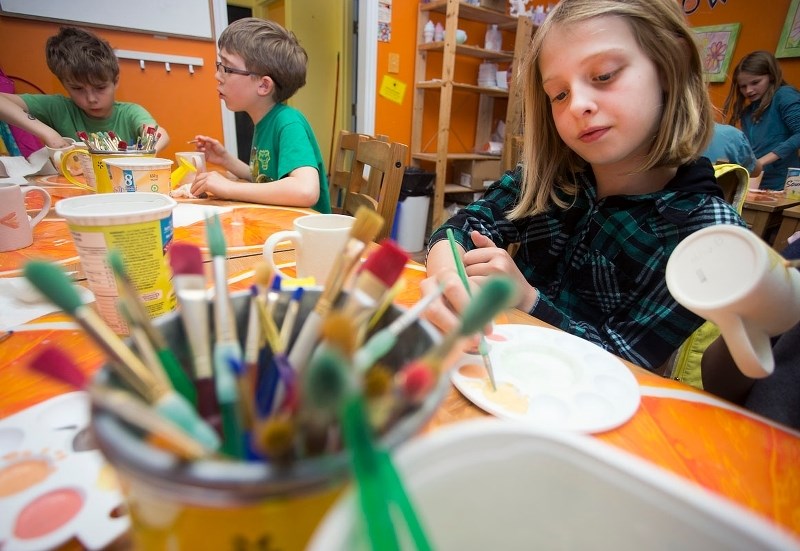The St. Albert Botanic Park has changed a lot since its inception 25 years ago and it’s taken a community to make it happen.
From May through September there are a host of activities down at this volunteer-operated park. From young students learning to plant onions and beans in May, to ongoing garden-related courses, to summer weddings, the park is a happening place that engages people of all ages.
Back in 1990 it was little more than a concept and a drawing made by two gardeners, who were especially fond of roses: former mayor Richard Plain and John Beedle, who at the time was parks planner for the City of St. Albert.
“It started when John and Richard started talking about the rose garden. They envisioned the rose garden,” said former city councillor, and park historian Margaret Plain.
Different ideas were tossed around and at one point a location near present-day Heritage Lakes was suggested. Finally, a petition was put out on the counter at Hole’s Greenhouses, requesting permission from city council for a botanic park on Sturgeon Road. An $11 million provincial grant from the Urban Park Program led to the development of the Red Willow Park trail system and with that start, the city finally leased the five-acre plot of land between the Sturgeon River and Sturgeon Road to the St. Albert Botanic Park in 1991.
Bit by bit the community came forward to help either by volunteering or by donating plants and commemorative trees and benches. The land was transformed from the old farmstead, which once belonged to the Atkinson family, who homesteaded there, into the beautiful park it is today.
“Early on we had five or six of us on the committee, who did most of the work,” said Ed Toop, a retired University of Alberta horticulturalist.
Now, the park has 150 volunteers and every Thursday many of them are out there pruning and cultivating the roses, planting and weeding the dahlias and down on their hands and knees in the cottage-garden to keep the flower beds trim.
The first year the land was plowed and the first seeding was done in what is now the cottage garden.
The rose garden wall construction began in 1996 with the help of St. Albert Rugby Club members.
“The rugby club members made it part of their spring training to help build the rose wall. It was made out of broken cement pieces that John Beedle had salvaged from old sidewalks,” Plain said.
The St. Albert Garden Club and Hole’s Greenhouses donated peonies and Patricia Bell donated day lilies.
“Now we have one of the largest, if not the largest daylily bed in Western Canada,” Plain said.
The “botanic” part of the park was always important to the planners. Every plant is labelled, so that passersby can figure out what grows there and can also plant it in their own yards.
“We wanted it to be an educational place too. That’s why we try to label things to show what will grow here. We wanted to do it for the community and with the community so there was a sharing of experience,” Plain said.
That community involvement still holds true. More than 500 children from different Grade 1 classrooms visit the park to learn about seeds and to plant their own beans each Tuesday and Thursday. Youngsters from Leo Nickerson School painted 100 commemorative sunshine-mugs at Glazing Pot Studios this past month. They will be sold as keepsakes at the park’s gift shop.
“We were very excited at helping in this community project and to help the park celebrate 25 years,” said Glazing Pot owner Lara Gerritse Mercier.
The rose garden has become a favourite locale for summer weddings and wedding photos. And all through the summer folks stop by to visit the different park segments to see the plants as they come into bloom. In the next few weeks, as the park’s 60 lilac trees and dozens of fruit trees flower, it will be a fragrant paradise. Later, the peonies, lilies and dahlias will put on a show of their own.
Looking forward to the next 25 years, Plain is optimistic that the park will continue to become more of a focal point in the city.
“In the future, I hope we can add an even greater educational component where people can learn about gardening. We’re working to make the park more accessible for people with mobility issues. We’re working to develop a heritage garden. The park will evolve, just as it has over the past 25 years,” said Margaret Plain.
John Beedle, who for many years was the botanic park’s busiest volunteer, is pleased the way it has developed.
“The botanic park is my hobby. I worked at my hobby and now I have a hobby working at what I love. Not many people can do that. What’s most satisfying about the park is the way it’s developing with the involvement of so many people,” Beedle said.




